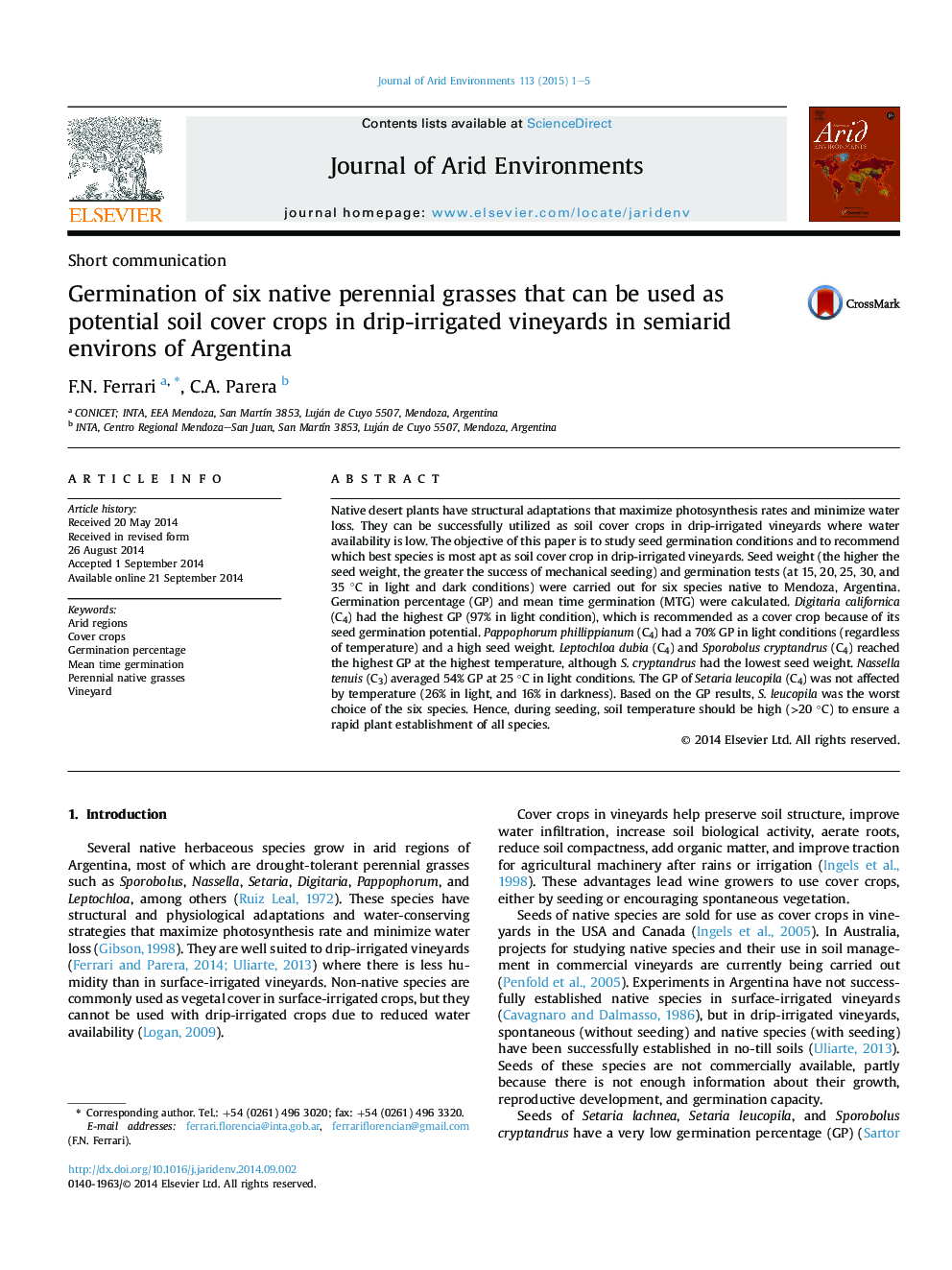| کد مقاله | کد نشریه | سال انتشار | مقاله انگلیسی | نسخه تمام متن |
|---|---|---|---|---|
| 4392888 | 1618246 | 2015 | 5 صفحه PDF | دانلود رایگان |
• Setaria leucopila and Sporobolus cryptandrus seeds should be scarified before seeding.
• S. leucopila reached the lowest germination percentage (GP) under assessed conditions.
• Digitaria californica achieved high GP under almost any assessed condition.
• GP response to temperature and light was variable to each species.
• Soil temperature should be >20 °C to ensure a fast and uniform plant establishment.
Native desert plants have structural adaptations that maximize photosynthesis rates and minimize water loss. They can be successfully utilized as soil cover crops in drip-irrigated vineyards where water availability is low. The objective of this paper is to study seed germination conditions and to recommend which best species is most apt as soil cover crop in drip-irrigated vineyards. Seed weight (the higher the seed weight, the greater the success of mechanical seeding) and germination tests (at 15, 20, 25, 30, and 35 °C in light and dark conditions) were carried out for six species native to Mendoza, Argentina. Germination percentage (GP) and mean time germination (MTG) were calculated. Digitaria californica (C4) had the highest GP (97% in light condition), which is recommended as a cover crop because of its seed germination potential. Pappophorum phillippianum (C4) had a 70% GP in light conditions (regardless of temperature) and a high seed weight. Leptochloa dubia (C4) and Sporobolus cryptandrus (C4) reached the highest GP at the highest temperature, although S. cryptandrus had the lowest seed weight. Nassella tenuis (C3) averaged 54% GP at 25 °C in light conditions. The GP of Setaria leucopila (C4) was not affected by temperature (26% in light, and 16% in darkness). Based on the GP results, S. leucopila was the worst choice of the six species. Hence, during seeding, soil temperature should be high (>20 °C) to ensure a rapid plant establishment of all species.
Journal: Journal of Arid Environments - Volume 113, February 2015, Pages 1–5
